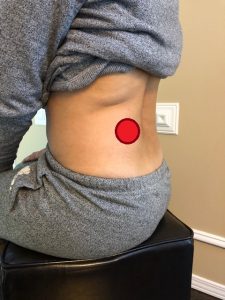Do you recall learning about classical conditioning and about Pavlov’s dogs in your psych101 course? You may be asking yourself, “What does classical conditioning or dogs salivating when they hear a bell ring have anything to do with me as a physio?”
Really smart pain researchers are now investigating whether classical conditioning has a role to play in pain thresholds. Here is a perhaps oversimplified explanation of how they do these experiments.
Step 1: A healthy volunteer receives either a painful or a non-painful electrocutaneous stimulus to a part of their body (e.g., low back), and they are asked to rate their pain.

Step 2: They then receive non-painful vibrotactile stimulus that is repeatedly paired with either the painful or the non-painful stimulus.
Step 3: At random, painful or non-painful electrocutaneous stimuli are simultaneously delivered together with the non-painful vibrotactile stimulus.
Basic Result: Stimuli were more likely to be rated as painful when they were paired with the conditioned stimuli; which means that the judgement of an event being painful or non-painful can be influenced by classical conditioning. Could that be one explanation for the maintenance of persistent pain?
References:

